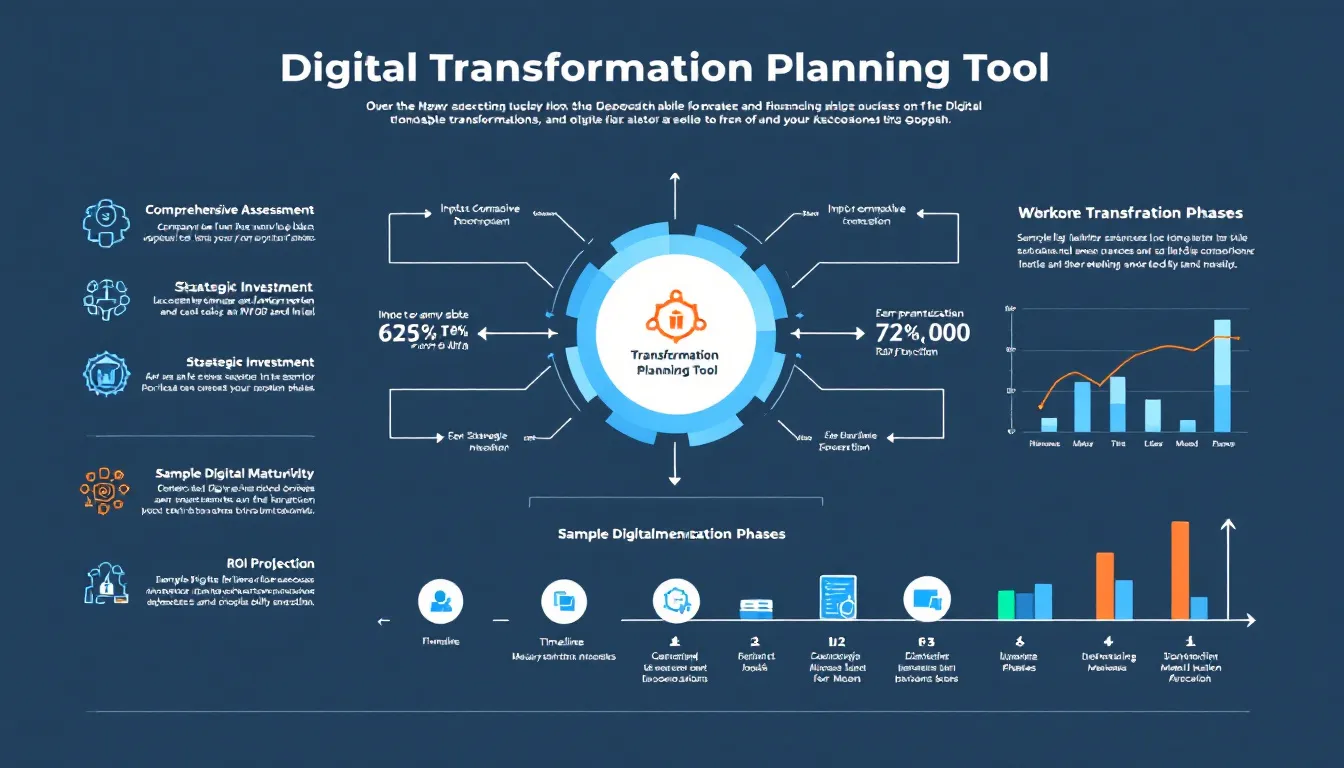Is this tool helpful?
How to use the tool
- Company Name – Type your organisation’s legal name. Example: “QuantumEdge Dynamics”; “Sunrise Logistics”.
- Current Digital Capabilities – Summarise existing systems and skills. Example: “On-premise SAP ERP with moderate BI reporting”; “Isolated CRM and email marketing only”.
- Areas for Innovation – List gaps or opportunities. Example: “Deploy robotic process automation in finance”; “Introduce AI-driven customer support chatbots”.
- Technological Investments Needed – Note hardware, software or services. Example: “5G-ready edge servers”; “Enterprise API gateway subscription”.
- Data Management & Analytics Plan – Outline governance and analytics use. Example: “Create GDPR-aligned data lake with role-based access”; “Adopt real-time dashboards for supply-chain KPI”.
- Implementation Timeline – Provide phases and dates. Example: “Q1-Q2 2025: cloud migration; Q3 2025: AI pilots”; “18-month rollout ending Dec 2026”.
- Change-Management Strategies – Describe how you will guide people. Example: “Monthly town-halls plus digital-skills micro-learning”; “Reward scheme for early adopters”.
After completing the fields, click “Generate.” The server-side API (action = process_llm_form) returns a structured, copy-ready plan you can share with executives, project managers, or investors.
Quick-Facts
- Average ROI for digital-maturity leaders is 26 % higher than industry peers (McKinsey, 2022).
- Cybersecurity spends account for 15 % of total transformation budgets on average (Gartner, 2023).
- 70 % of large programmes fail without structured change management (Prosci, Best Practices Report, 2021).
- Data-driven firms are 23 times likelier to acquire customers (Brynjolfsson et al., Harvard Business Review, 2022).
What is the Digital Transformation Plan Generator?
The generator is an online form that converts your inputs into a tailored roadmap covering current maturity, investment priorities, timeline, and adoption tactics. It uses a large-language-model API hosted on your WordPress backend to draft the plan instantly.
Which inputs does the tool ask?
You enter seven items: company name, capabilities, innovation areas, investments, data plan, timeline, and change-management approach. Each answer adds context so the model can rank priorities accurately.
How does the tool process my answers?
The form posts JSON to the WordPress endpoint, verifies a nonce for security, then prompts an LLM that returns HTML. Your browser injects the returned markup into the results panel—no client-side calculations occur.
Why define a data-management plan?
Clear governance reduces regulatory fines; GDPR penalties alone reached €2 billion in 2023 (European Data Protection Board, 2024). A plan also improves analytics quality, boosting decision speed.
How long do transformations typically take?
Median enterprise programmes last 24-36 months, depending on scope and culture (Boston Consulting Group, 2023).
What does effective change management look like?
It trains staff, rewards new behaviours, and communicates progress weekly. “Regular feedback loops triple adoption speed” (Kotter & Schlesinger, Change and Resistance, Harvard Business Press).
How secure is the data submitted?
The form uses HTTPS, WordPress nonce validation, and same-origin credentials. Your inputs stay on the host server; nothing is shared externally unless you export the plan.
Who benefits most from this generator?
SMBs lacking internal consultants, enterprises mapping legacy-to-cloud journeys, and public-sector bodies needing stakeholder-friendly plans all gain a fast, structured starting point.
Important Disclaimer
The calculations, results, and content provided by our tools are not guaranteed to be accurate, complete, or reliable. Users are responsible for verifying and interpreting the results. Our content and tools may contain errors, biases, or inconsistencies. Do not enter personal data, sensitive information, or personally identifiable information in our web forms or tools. Such data entry violates our terms of service and may result in unauthorized disclosure to third parties. We reserve the right to save inputs and outputs from our tools for the purposes of error debugging, bias identification, and performance improvement. External companies providing AI models used in our tools may also save and process data in accordance with their own policies. By using our tools, you consent to this data collection and processing. We reserve the right to limit the usage of our tools based on current usability factors.







